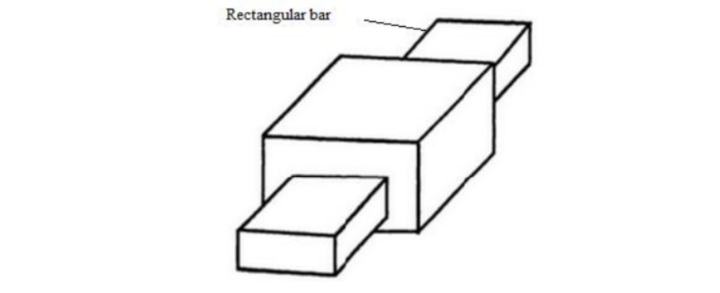- Home/
- GATE MECHANICAL/
- GATE ME/
- Article
Constrained Motion
By BYJU'S Exam Prep
Updated on: September 25th, 2023

Constrained motion occurs when an object is forced to move in a specific manner. It may have to go over a curving track, slide on a table that is advancing upwards, maintain touch with an accelerating wedge, and so on. When a particle is compelled to proceed along a specific path due to externally impressed forces. Constraints are restraints imposed on the motion or location, or both of a system of particles. Constraint forces are the forces that the constraining object exerts on the object to make it follow the constraints of movement.
Constrained Motion PDF [GATE Notes]
Constraints are restrictions on an object’s motion, position, or both motion and position. If the machine’s elements come into contact with each other, they will form a pair. If the motion between the pair is completely or partially constrained, the pair is referred to as a kinematic pair. Let’s take a deep dive into the concepts related to constrained motion.
Table of content
What is Constrained Motion?
The body has six degrees of freedom when it is not bound. The body will not move in any direction if all degrees of freedom are locked. Confined motion happens when the body can only move in one direction and is restricted in all others. The thing moves in a restricted manner in a restricted motion. A fan’s circular motion, for example, is constrained. The constrained force is the force exerted by the constraining object on a specific object to cause it to follow the movement constraints.
Types of Constrained Motion
A body or particle is pushed or compelled to follow a given path due to the influence of external forces on it. These forces that restrict motion are known as ‘constraint forces.’ Examples include a body moving on a wedge, a particle sliding down a curve under gravity, a particle attached to one end of a thread, fan movement, and many more. Two different limitations can be applied to a system: directions and restrictions.
Constrained motion is classified into three types:
- Completely constrained motion
- Partially or successfully constrained motion
- Incompletely constrained motion
Completely Constrained Motion
The motion in which the pair can move in just one direction is completely constrained. This holds true independent of the force’s direction of application. The most typical representation of this motion is a rectangular shaft moving through a rectangular hole. The restriction, in this case, is the design of the shaft and hole. There is only one way that the shaft can move.
Another example of completely constrained motion is the motion of the piston and cylinder in a steam engine. There is just one direction in which the piston can move. In this case, whichever way the crank rotates, the piston will reciprocate with respect to the cylinder. As a result, it is a completely constrained motion.
Examples: square holes with a square bar, a Shaft in the circular hole with collars at each end, and
a piston inside an IC engine’s cylinder.
Download Formulas for GATE Mechanical Engineering – Machine Design

Partially or Successfully Constrained Motion
A motion that can occur in more than one direction without being influenced by any external force is partially or successfully constrained. However, when an outside force is added to the system, it can only move in one direction. As a result, it is known as partially constrained or successfully constrained motion. The footstep bearing moves in one direction in response to an external force. Because it only goes in one direction under the influence of an external force, it is an example of partially or successfully constrained motion.
The motion of a footstep bearing shaft is successfully limited when a compressive force is applied to it. In a bearing, the shaft can rotate or move upwards. This is an example of partially restricted motion. However, axial upward movement is inhibited when a load is applied to the shaft. The successfully constrained motion refers to the pair’s movement.
Example: When a compressive load is applied to the shaft in a footstep bearing, the motion becomes successfully constrained.

Incompletely Constrained Motion
When moving between two objects in more than one direction, this is referred to as incompletely constrained motion. Adjusting the direction of the impacting force can change the direction of the pair’s relative motion. A circular shaft or a strip in a circular hole represents partially constrained motion. The circular shaft or strip can be inserted into the hole by sliding or rotating. Both actions are independent, and the shaft can perform either. Because it happens in more than one direction, this is an incompletely contained motion. This is shown in the example below.
Example: A circular shaft in a circular hole can rotate or slide in the hole. Both motions are unrelated to one another.
Download Formulas for GATE Mechanical Engineering – Strength of Materials



